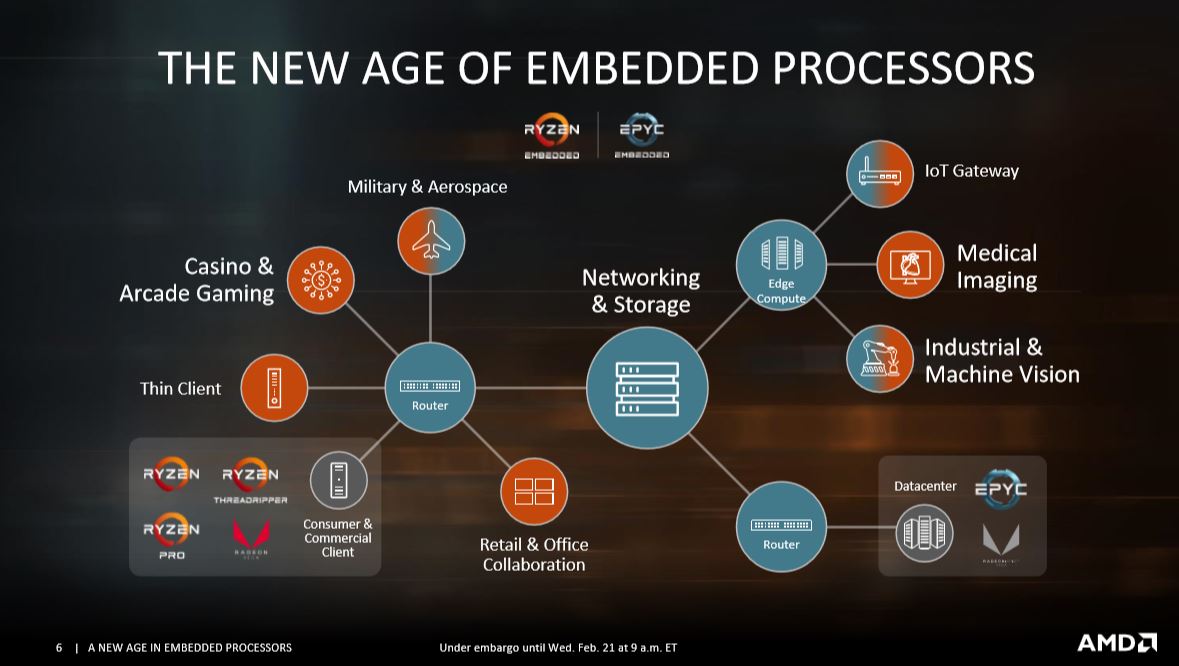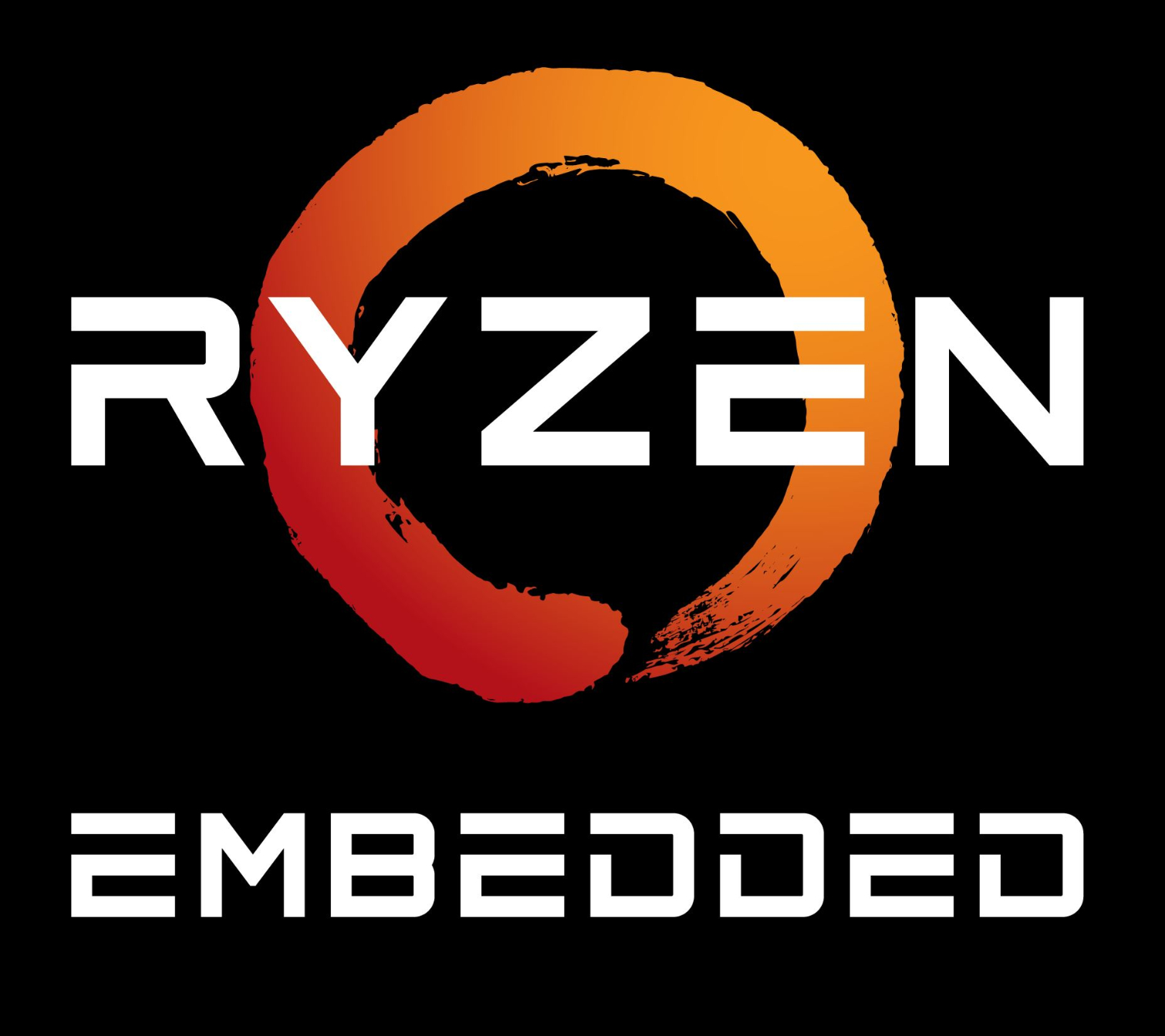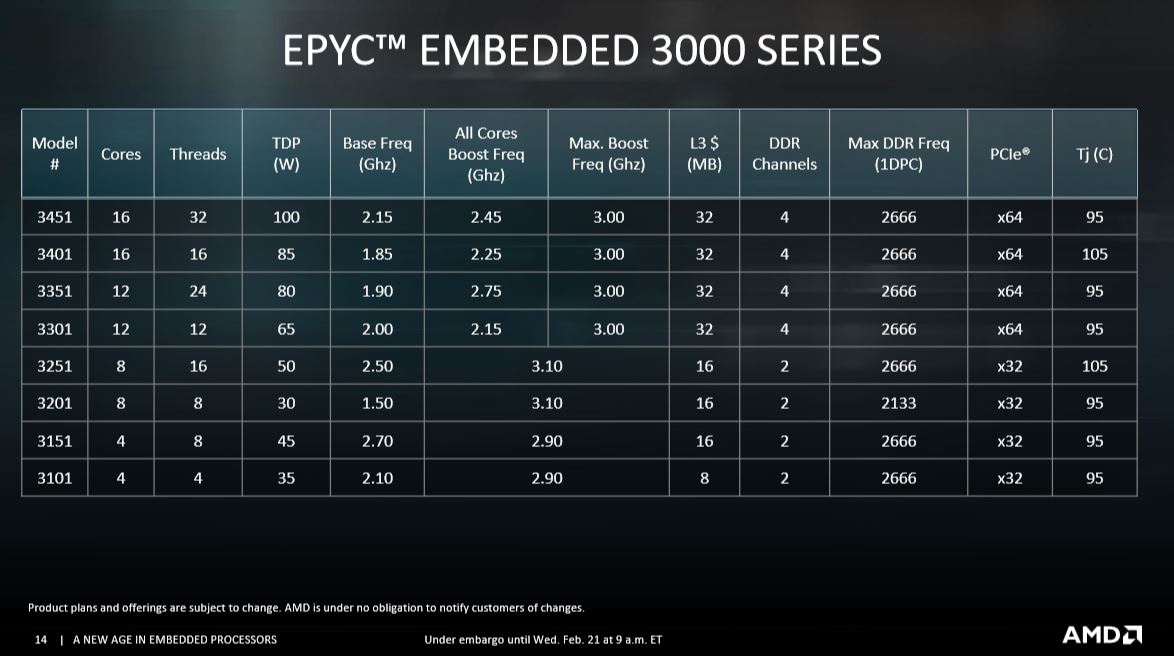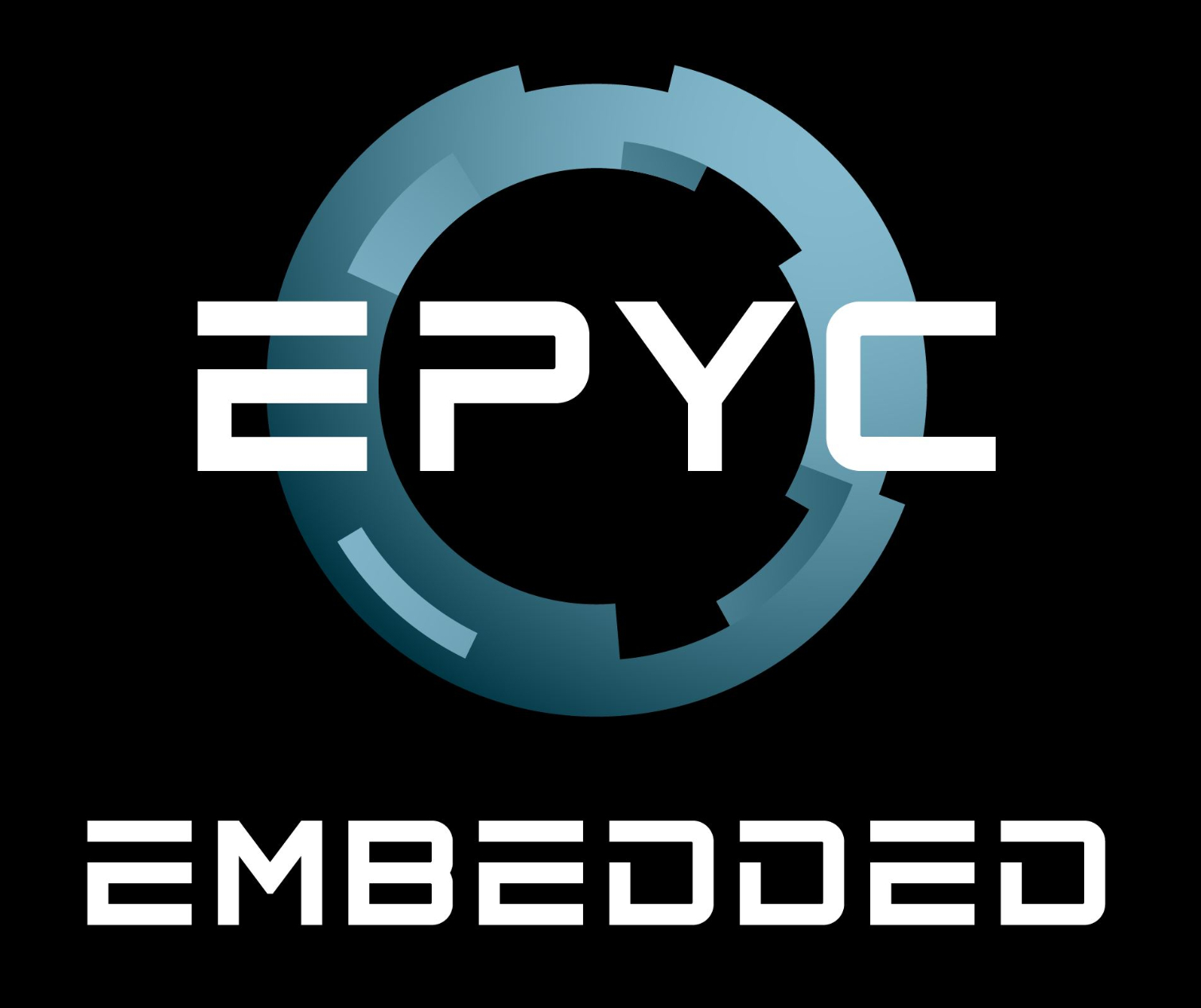AMD Launches Ryzen Embedded V1000, EPYC Embedded 3000 Processors
AMD announced its new EPYC Embedded 3000 and AMD Ryzen Embedded V1000 processors, which feature Zen cores paired with Vega graphics, today at its Embedded Event in London.
From the PC on your desktop to the phone in your hand, and nearly everything in between, microprocessors touch nearly every aspect of our daily lives. Many of these applications go unnoticed, but processors chug away behind the scenes inside mundane pieces of equipment like digital signs or in medical imaging equipment, among many others.
AMD has used its revitalizing Zen microarchitecture and its Vega graphics to penetrate nearly every corner of the client computing market, from high-end gaming with Threadripper down to extreme budget gaming with the Raven Ridge lineup, and also has begun scaling the heights of the data center with the EPYC server processors. With so many facets of the market already covered, it's only fitting that AMD is expanding its assault to the embedded market.
AMD recently redefined our expectations of integrated graphics with its Raven Ridge models with Vega graphics, and now the company is bringing similar capabilities to the embedded market with the AMD Ryzen Embedded V1000. AMD classifies this product as an APU (Accelerated Processing Unit), even though the company distanced itself from that naming convention with its desktop Raven Ridge products. These are functionally the same type of processor, though. AMD geared these processors for use in medical imaging, industrial systems, digital gaming, and thin clients, among others.
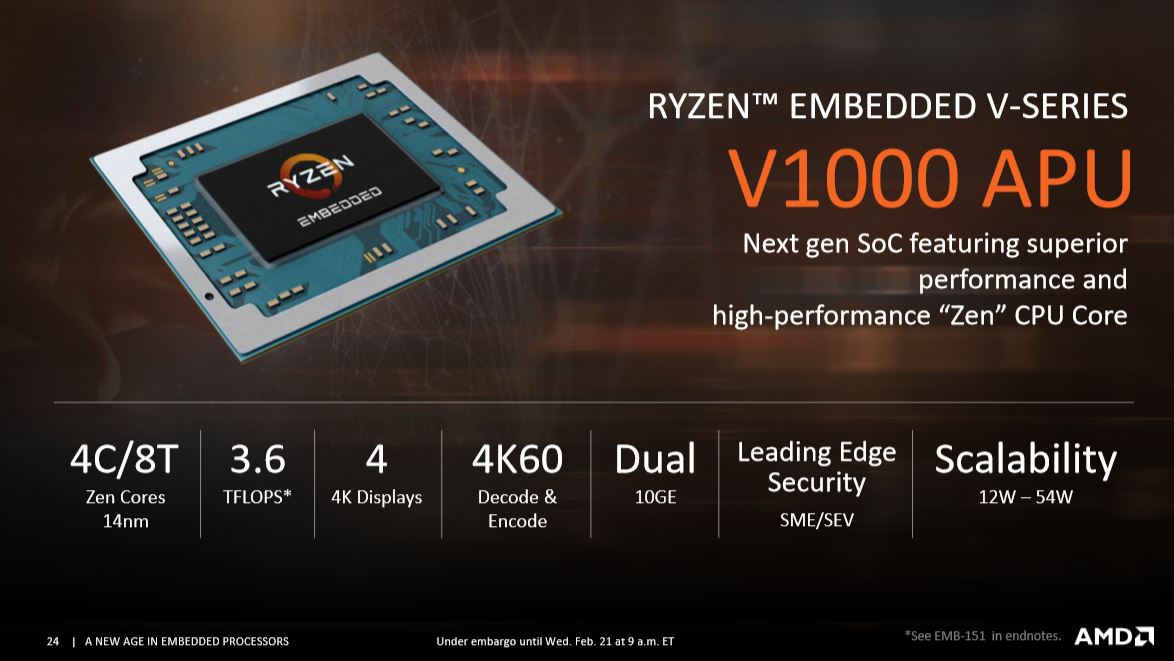
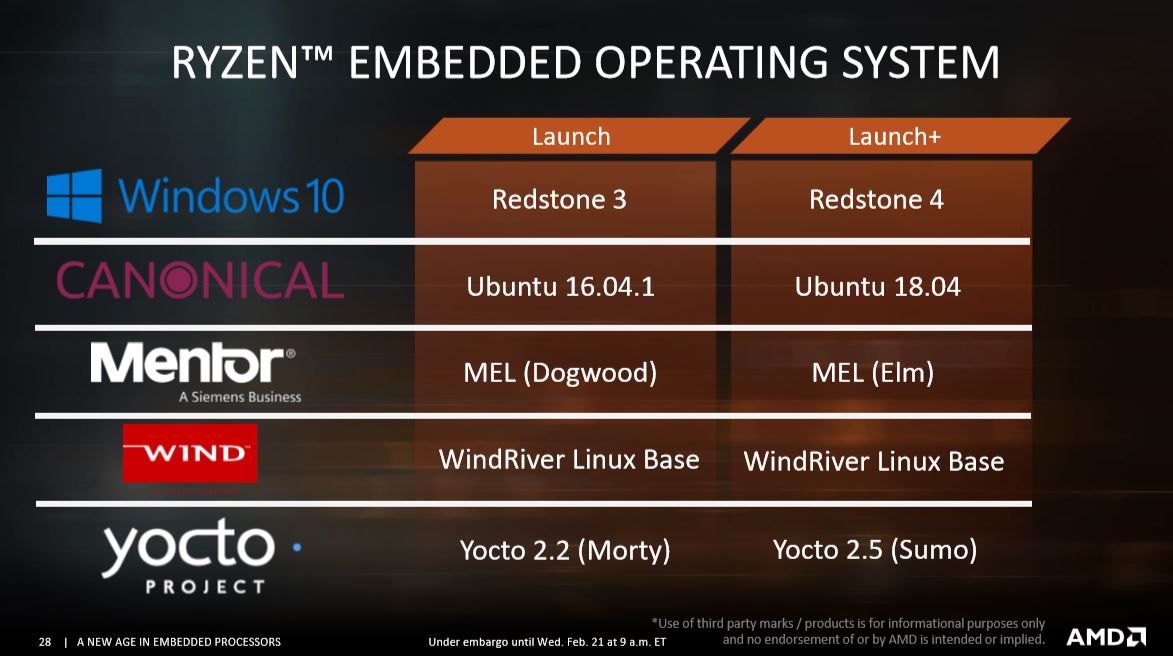
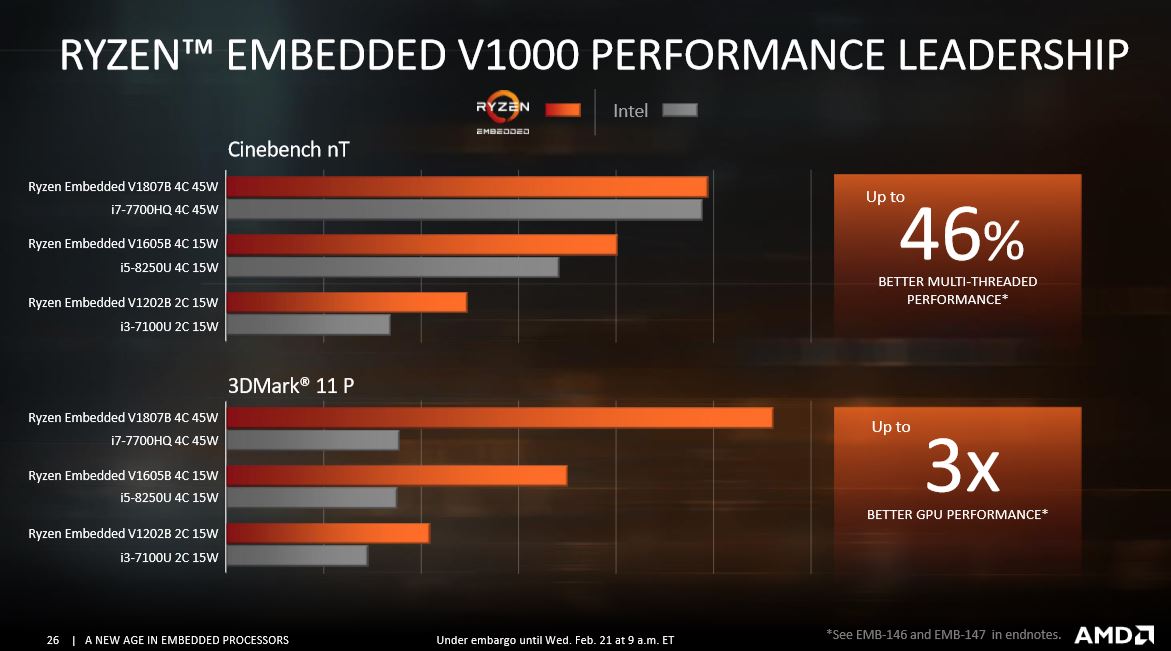
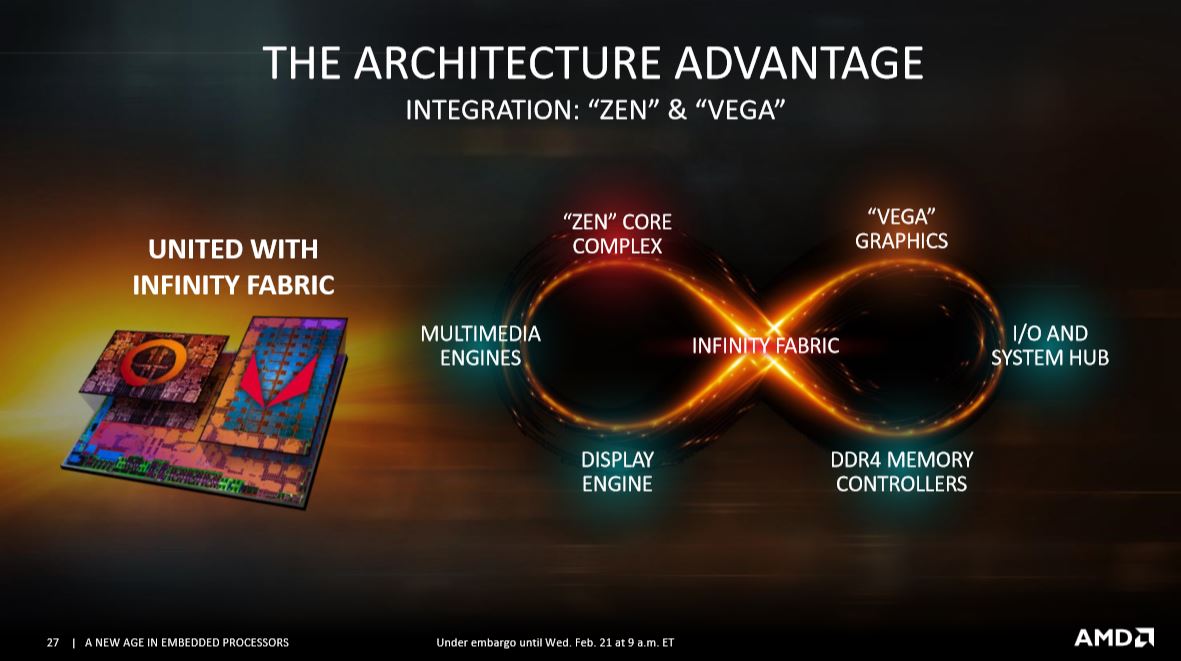
Like its desktop PC counterparts, the Ryzen Embedded SoC includes both Zen execution cores and Vega integrated graphics on a single die. The processors come with up to four cores and eight threads and 11 Vega Compute Units (CUs). They offer up to 3.6 TFLOPS (16-bit).
T
he processors support up to four 4K displays, 5K, h.265 encode/decode, and VP9 decode. We expect that these processors also support the full suite of normal integrated Vega graphics capabilities listed here. The processors fall into the 12W to 54W TDP range, which is lower than the 65W threshold of the desktop parts. Connectivity includes 16 PCIe lanes, dual 10GbE, and wide USB connectivity options (such as USB 3.1/USB-C). As expected, they also support SATA and NVMe.
Get Tom's Hardware's best news and in-depth reviews, straight to your inbox.
Interestingly, the processors support dual-channel DDR4, but AMD supports up to 3,200 MT/s with these processors as opposed to the 2,933 MT/s with the desktop variants. They also feature the secure processor for crypto co-processing, SME (Secure Memory Encryption), and SEV (Secure Encrypted Virtualization) features that provide a high level of security in the far-flung climes of the embedded world. We covered all of these features in depth in our original EPYC launch coverage.
AMD also announced its new EPYC Embedded 3000, which, as the name implies, are embedded-focused derivatives of the EPYC server processors. The EPYC Embedded processors, befitting of the target segment, only range from four to 16 cores. In contrast, the larger EPYC server processors scale up to 32 cores. AMD designed these processors specifically for storage, networking, and edge computing devices, so they come with a scaled-back set of integrated I/O that reflects the operating environment, such as up to 64 lanes of PCIe connectivity (down from 128 with EPYC server chips) and up to eight channels of 10GbE.
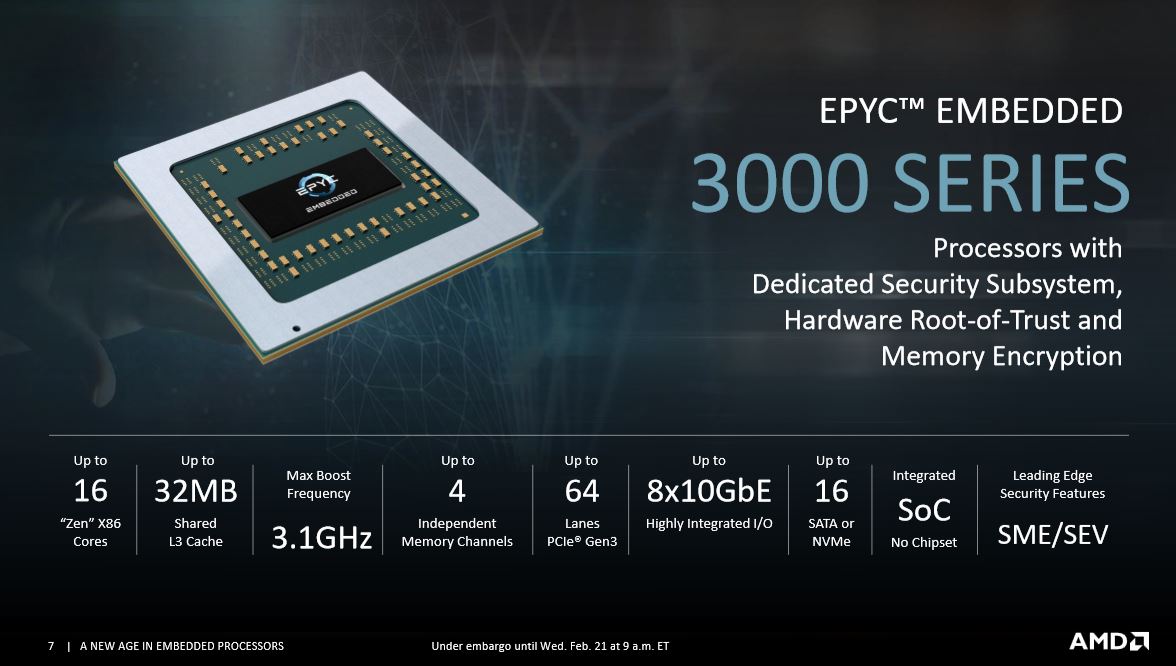
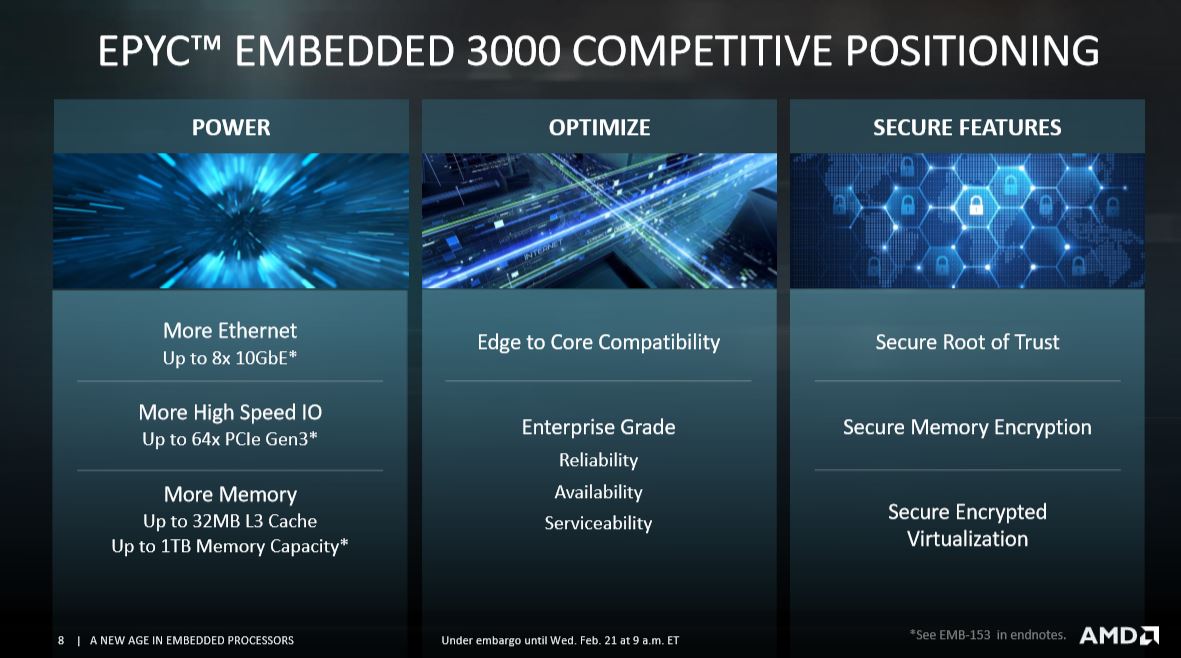
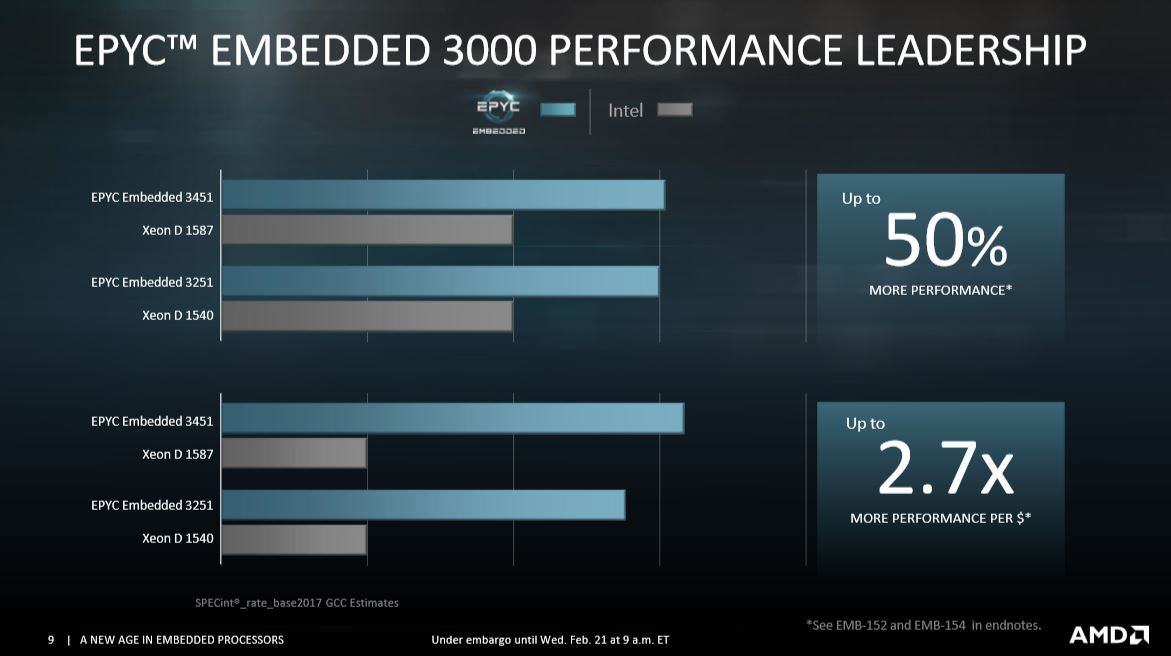
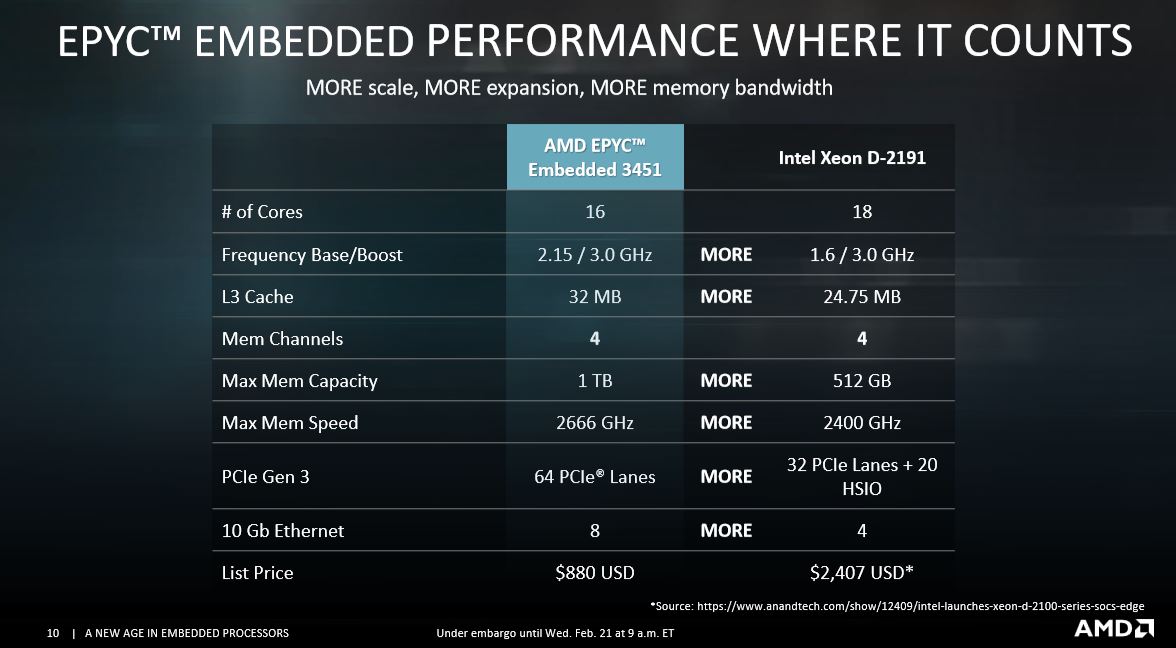

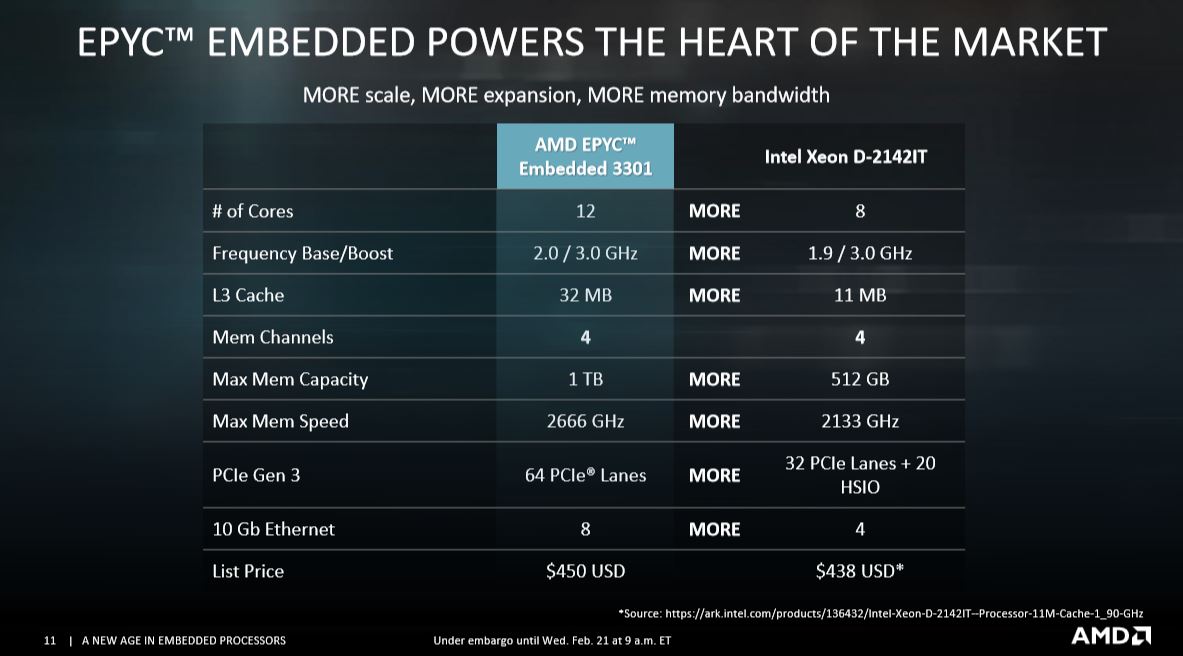
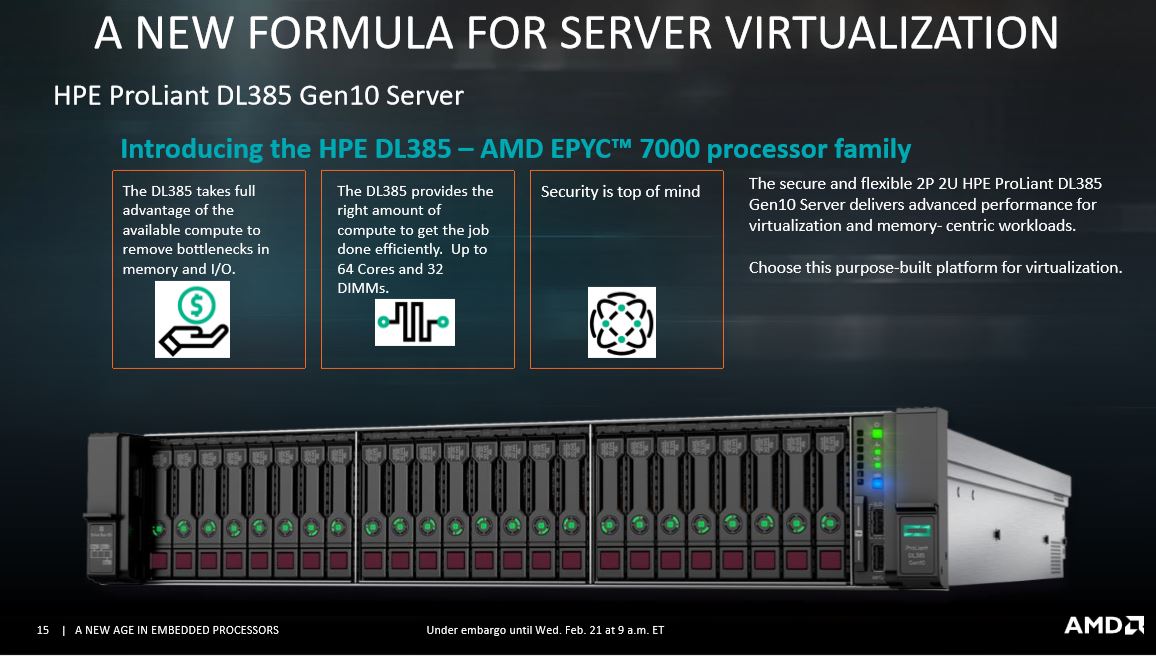
These processors also come with a maximum of 32MB of L3 cache and four memory channels (down from eight). They also have a more amenable TDP range for embedded applications of 30W to 100W, which is much lower than the 120W to 180W of the EPYC server models.
These processors also leverage key aspects of the basic EPYC processor's RAS (Reliability, Availability, Serviceability) feature set that provides data detection, correction, recovery, and containment. They also feature the secure processor for crypto co-processing, SME (Secure Memory Encryption), and SEV (Secure Encrypted Virtualization) features as the full-fledged EPYC server processors.
AMD's Scott Aylor, corporate Vice President and General Manager of the Data Center and Embedded Solutions Group, said:
“Today we extend the high-performance x86 ‘Zen’ architecture from PCs, laptops, and the datacenter to networking, storage, and industrial solutions with the AMD EPYC Embedded and AMD Ryzen Embedded product families, delivering transformative performance from the core to the edge. AMD EPYC Embedded 3000 raises the bar in performance for next-generation network functions virtualization, software-defined networking, and networked storage applications. AMD Ryzen Embedded V1000 brings together the ‘Zen’ core architecture and ‘Vega’ graphics architecture to deliver brilliant graphics in a single chip that provides space and power savings for medical imaging, gaming, and industrial systems. With these high-performance products, AMD is ushering in a new age for embedded processors.”
The company announced a range of partners and customers at its event, some of which have also launched new products with the new processors. Those partners include Seagate Technology Cloud Systems, Arrow Electronics Intelligent Systems, Esaote, QTech, Seto, and many others.
These new products represent yet another market segment that AMD's scalable Zen microarchitecture is capable of addressing, fulfilling AMD CEO Lisa Su's original promise that Zen would boost the company back into contention in all segments of the market. The year has just begun for AMD, but it has a lot more coming in 2018, and the products announced today are merely a taste of what the company has in store.

Paul Alcorn is the Editor-in-Chief for Tom's Hardware US. He also writes news and reviews on CPUs, storage, and enterprise hardware.
-
Kennyy Evony Firstly, with all fake metrics AMD comes out with at launch and later debunked every time, I call this BS.Reply -
redgarl Threadripper is not a gaming CPU, it is a calculation CPU for scientific render in multi-threading environment. Once again, you are spreading whatever.Reply
However, interesting to see AMD pushing integrated graphic like this. In all honesty, on that side, Intel cannot compete and will not for a decade. Might be just too late at that point.
